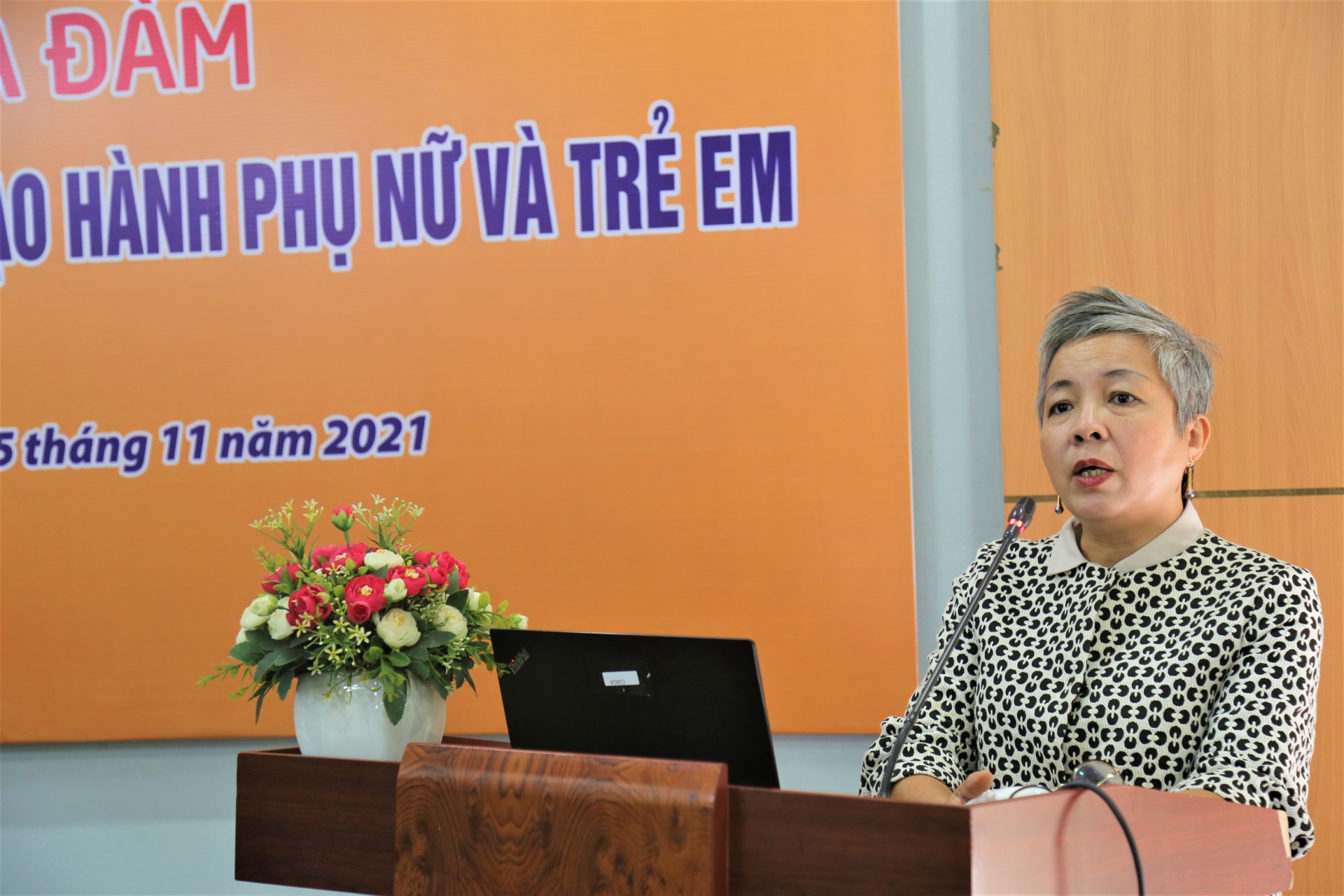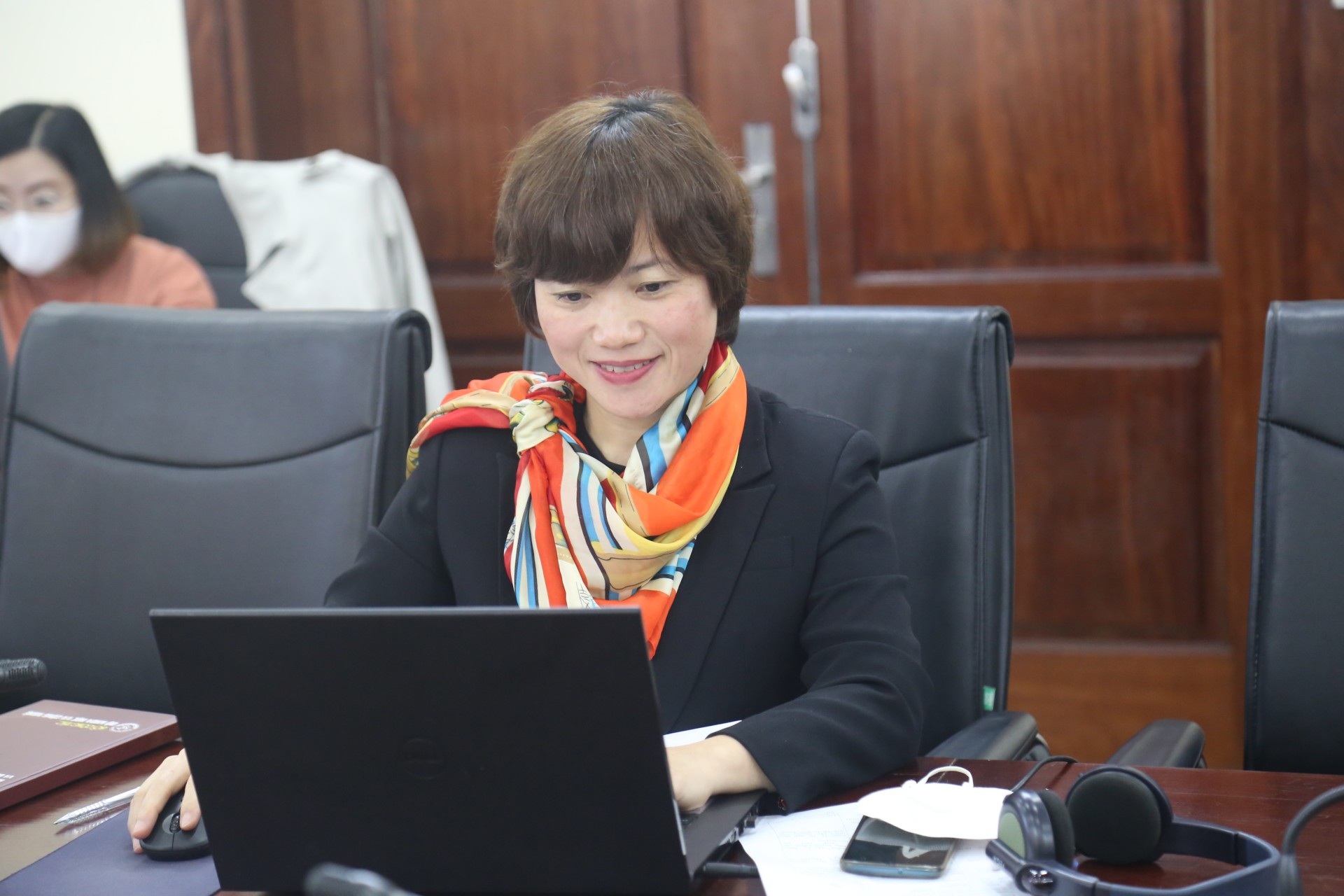Ms. Vu Van Anh (Director of the Center for Research and Application of Science on Gender - Family - Women and Adolescents (CSAGA))
At the seminar, Ms. Vu Van Anh (Director of the Center for Research and Application of Science on Gender - Family - Women and Adolescents (CSAGA)) warned that 90% of those who commit acts of violence against women and children are actually relatives or acquaintances of their families. 63% of Vietnamese women have experienced violence at least once from their husbands or partners, but over 90% of victims have chosen to remain silent. Globally, one in three women dies from gender-based violence – “meaning that in the time it takes to finish a cup of tea, a woman dies.”
Emphasizing that the press and media are an important channel for promoting social awareness of gender-based violence, Ms. Van Anh stated that journalists first and foremost need to equip themselves with knowledge and a correct understanding of gender equality and gender-based violence in order to reflect stories in a humane way and without violating ethical principles. “Even though journalists face time pressure and the pressure to recount very specific details to increase authenticity, you must find a way to ensure that those involved do not feel they have been violated a second time, or that their identities are revealed, which could easily plunge their lives into crisis.”
Ms. Van Anh also shared that in many cases, reporters conducting interviews and gathering information for articles about gender-based violence do not fully understand the concept of gender-based violence, resulting in questions that are not in-depth enough, and even reflecting prejudiced thinking, which inadvertently leads to articles that create misconceptions for readers.
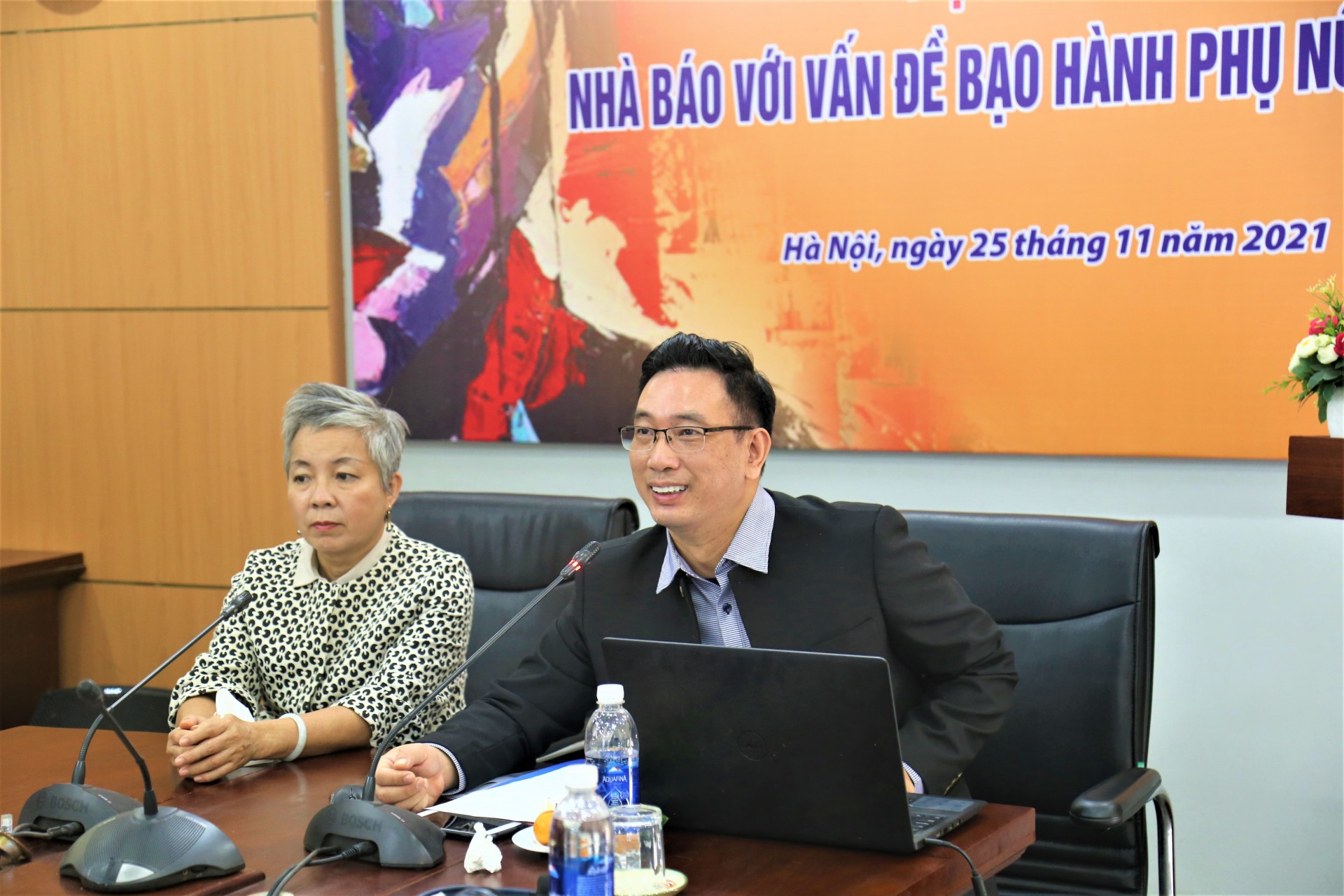 Dr. Do Anh Duc (Institute of Journalism and Communication Training)
Dr. Do Anh Duc (Institute of Journalism and Communication Training)
"Sometimes we only have one choice: on one hand, fame and fulfilling our mission with the most truthful information, and on the other hand, protecting the safety and dignity of the subject. This is sometimes a difficult choice for journalists, depending on their level of maturity and awareness," said the CSAGA director.
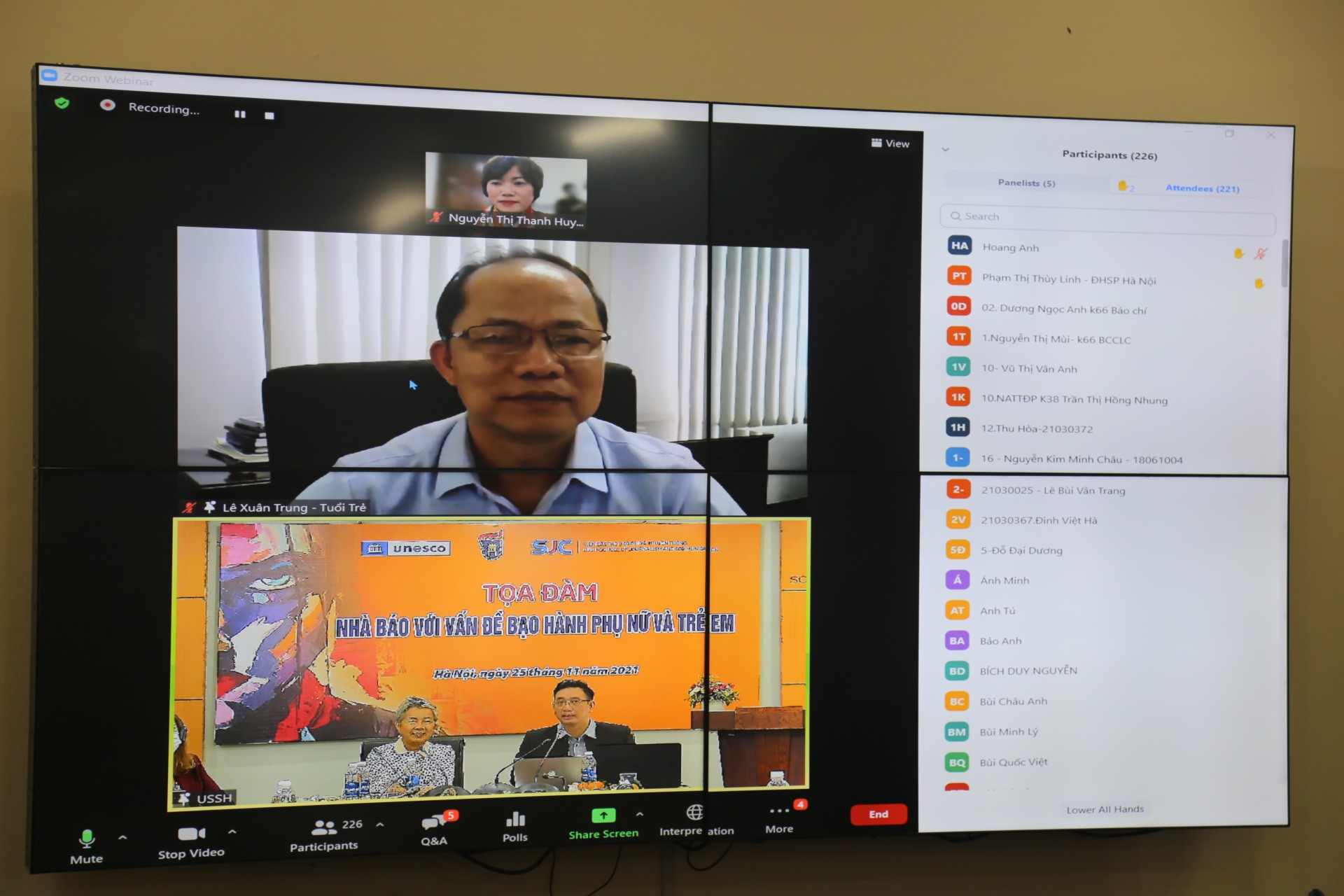 Mr. Le Xuan Trung (Deputy Editor-in-Chief of Tuoi Tre newspaper) participated online.
Mr. Le Xuan Trung (Deputy Editor-in-Chief of Tuoi Tre newspaper) participated online.Mr. Le Xuan Trung (Deputy Editor-in-Chief of Tuoi Tre newspaper) shared that there have been training courses on improving skills in preventing and combating sexual harassment and violence against women and children for reporters and journalists, with the goal of raising awareness and creating gender equality and democracy within the media environment. Furthermore, violence against women is a violation of human rights, a social issue that the media has a responsibility to address in order to change societal perceptions of this problem and contribute to promoting policies, regulations, and laws to regulate social behavior. Reporting on these issues will have a deterrent effect on society, not just recounting criminal acts, but serving as a reminder and urging society and the government to work together to prevent acts of violence against women and girls.
Ms. Lucila Carrasco (UNESCO Information and Communication Service)
Sharing her thoughts on the handbook "Reporting on Violence Against Women and Girls - A Handbook for Journalists," Ms. Lucila Carrasco (UNESCO Information and Communication Department) stated that this document, published by UNESCO in 2019, aims to provide a useful resource on this issue for journalists, journalism students, lecturers, and media professionals worldwide. It is a highly informative tool that can practically support journalists in reporting on gender-based violence.
The handbook provides guidance on reporting on gender-based violence, divided into two chapters, offering specific information on combating violence against women and girls related to: cyberbullying and online harassment of female journalists, early or child marriage, forced marriage, sex-selective abortion, sexual harassment, sexual assault, honor killings, human trafficking and migrant trafficking, violence against women in conflict, abuse by an intimate partner or former lover, and domestic homicides...
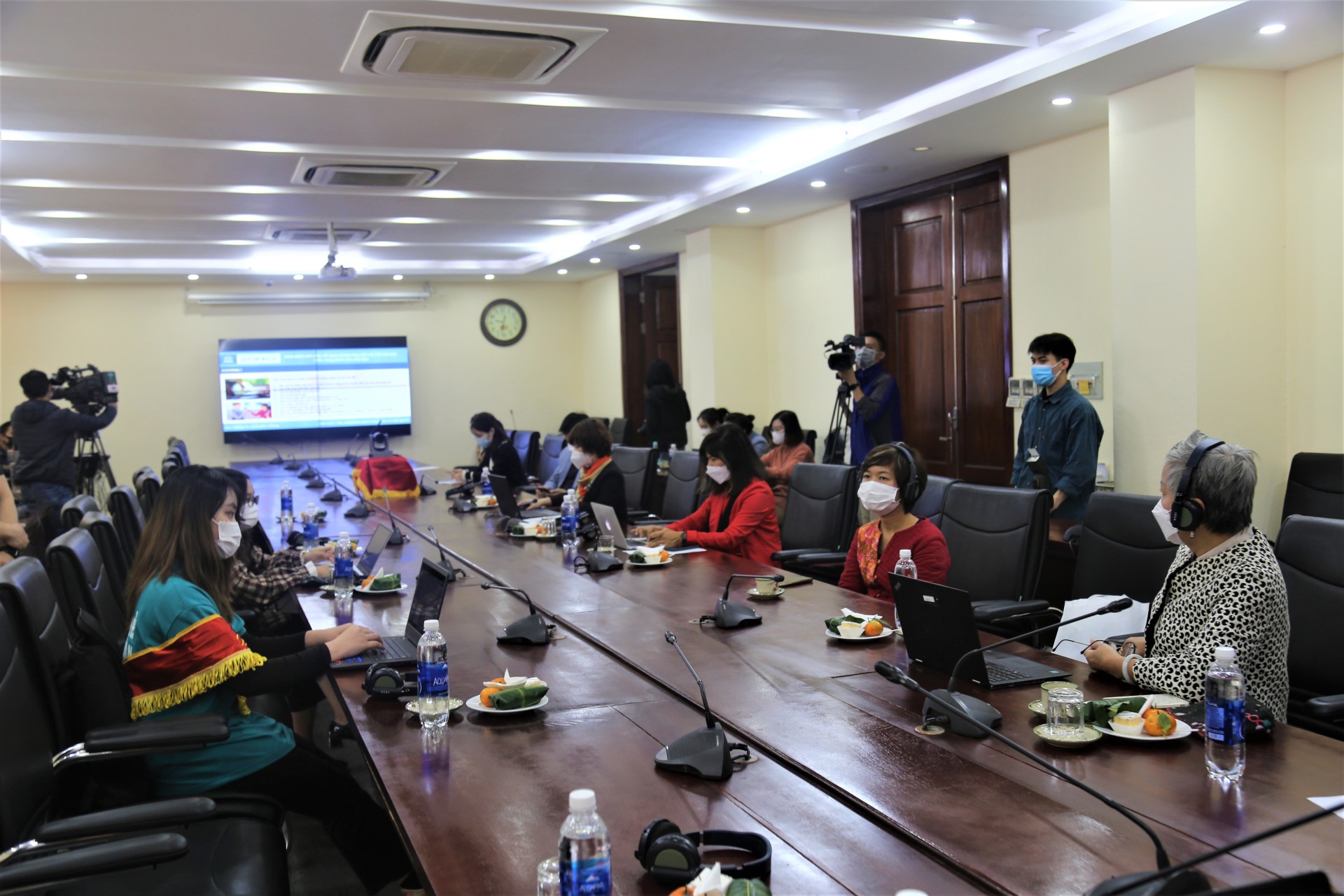
Delving into the professional skills of journalism, the document offers general recommendations on how to address, structure, and report on violence against women and girls; news writing and editing skills related to the principles of ensuring respect for human dignity, safety, and trust with the interviewee, informed consent, listening to feedback, location selection, cultural sensitivity, interpreter selection, interviewing children, image selection... "The handbook provides media professionals with a number of recommendations and examples of practice; helping journalists better handle the dilemmas they face when reporting on specific gender issues."
Assoc. Prof. Dr. Nguyen Thi Thanh Huyen (Deputy Director of the Institute of Journalism and Communication Training, University of Social Sciences and Humanities)
From the perspective of journalism and communication training institutions, Associate Professor Dr. Nguyen Thi Thanh Huyen (Deputy Director of the Institute of Journalism and Communication Training, University of Social Sciences and Humanities) stated: The Institute has consulted very closely.Code of professional ethics for journalistsThe ten-point code of conduct, issued by the Vietnam Journalists Association in 2016, incorporates these guidelines into the learning outcomes of journalism and communication training programs. The goal is to train journalists and media professionals who are both highly skilled professionally and possess strong ethical values. Specifically, Article 4 of the Code clearly states that journalists must uphold humanistic values, respect human rights, refrain from invading privacy, and avoid harming the legitimate interests of individuals or organizations. “As an educational institution that prioritizes humanistic values in training, humanistic journalism is a global trend in journalism and a value we pursue. We have always strived and will continue to strive to realize this value in our current and future training programs and products.”
Related articles:
